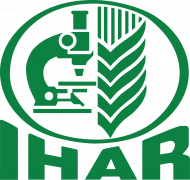Weeds compete with crops including potato and cause a huge yield and quality reduction. This competition varies according to weed type and their infestation level. The objective of this study was to explore the inter- and intra-specific competition of potato and four of its major weeds, i.e., Amaranthus retroflexus, Chenopodium album, Salsola kali, and Solanum nigrum, under varying densities. The weeds and potato plants were grown in pots by maintaining weed densities of 0, 2, 4, and 6 weed plants, together with the potato plant densities of 0, 1, 2, and 3, with all possible interactions and a control (only weed or potato plants). The results showed that with an increase in the density of A. retroflexus, potato height and yield started decreasing, and there was a 9–49% tuber yield reduction due to A. retroflexus interference depending on its density. The A. retroflexus height and biomass were positively influenced under low inter-specific competition with potato compared to when grown alone (intra-specific competition). The maximum C. album height and biomass were observed under low intra-specific (only 2 C. album plants) and inter-specific competition conditions (2 C. album × 1 potato). There was a 9–48% reduction in tuber yield when potato was exposed to competition from different densities of C. album. The height and biomass of S. kali were significantly higher under low inter- and intra-specific competition. Tuber yield loss due to S. kali interference was 32–63% under inter-specific competition conditions. The highest height and dry weight of S. nigrum were recorded under low competition/densities (2 S. nigrum × 1 potato). Yield loss under inter-specific competition of potato with S. nigrum was 22–43% depending on the densities of S. nigrum. In general, the weeds performed well under low competition and caused a decrease in tuber yield, showing their ability to compete at inter-specific competition conditions. The results of this study could be helpful in providing insights into the competition of potato with their common weeds, enabling a focus on the management of the most competitive ones.
Full publication URL















